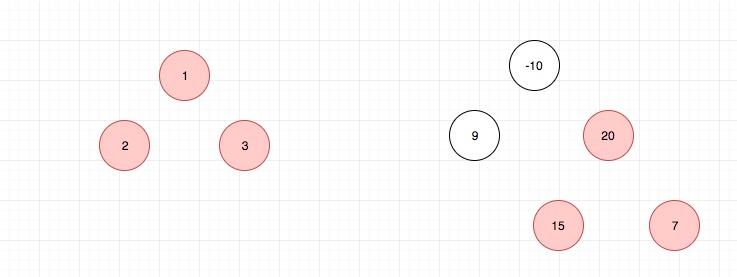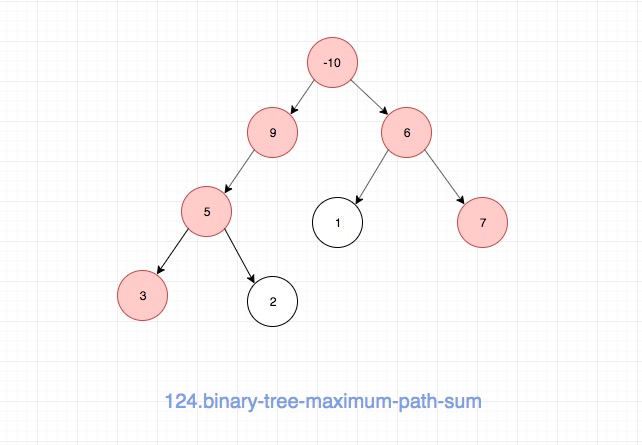3.9 KiB
3.9 KiB
题目地址
https://leetcode.com/problems/binary-tree-maximum-path-sum/description/
题目描述
Given a non-empty binary tree, find the maximum path sum.
For this problem, a path is defined as any sequence of nodes from some starting node to any node in the tree along the parent-child connections. The path must contain at least one node and does not need to go through the root.
Example 1:
Input: [1,2,3]
1
/ \
2 3
Output: 6
Example 2:
Input: [-10,9,20,null,null,15,7]
-10
/ \
9 20
/ \
15 7
Output: 42
思路
这道题目的path让我误解了,然后浪费了很多时间来解这道题 我觉得leetcode给的demo太少了,不足以让我理解path的概念 因此我这里自己画了一个图,来补充一下,帮助大家理解path的概念,不要像我一样理解错啦。
首先是官网给的两个例子:
接着是我自己画的一个例子:
大家可以结合上面的demo来继续理解一下path, 除非你理解了path,否则不要往下看。
树的题目,基本都是考察递归思想的。因此我们需要思考如何去定义我们的递归函数,
在这里我定义了一个递归函数,它的功能是,返回以当前节点为根节点的MathPath
但是有两个条件:
- 第一是跟节点必须选择
- 第二是左右子树只能选择一个
为什么要有这两个条件?
我的想法是原问题可以转化为:
以每一个节点为根节点,我们分别求出max path,最后计算最大值,因此第一个条件需要满足.
对于第二个,由于递归函数子节点的返回值会被父节点使用,因此我们如果两个孩子都选择了 就不符合max path的定义了,这也是我没有理解题意,绕了很大弯子的原因。
因此我的做法就是不断调用递归函数,然后在调用过程中不断计算和更新max,最后在主函数中将max返回即可。
关键点解析
- 递归
- 理解题目中的path定义
代码
代码支持:JavaScript,Java
- JavaScript
/*
* @lc app=leetcode id=124 lang=javascript
*
* [124] Binary Tree Maximum Path Sum
*/
/**
* Definition for a binary tree node.
* function TreeNode(val) {
* this.val = val;
* this.left = this.right = null;
* }
*/
function helper(node, payload) {
if (node === null) return 0;
const l = helper(node.left, payload);
const r = helper(node.right, payload);
payload.max = Math.max(
node.val + Math.max(0, l) + Math.max(0, r),
payload.max
);
return node.val + Math.max(l, r, 0);
}
/**
* @param {TreeNode} root
* @return {number}
*/
var maxPathSum = function(root) {
if (root === null) return 0;
const payload = {
max: root.val
};
helper(root, payload);
return payload.max;
};
- Java
/**
* Definition for a binary tree node.
* public class TreeNode {
* int val;
* TreeNode left;
* TreeNode right;
* TreeNode(int x) { val = x; }
* }
*/
class Solution {
int ans;
public int maxPathSum(TreeNode root) {
ans = Integer.MIN_VALUE;
helper(root); // recursion
return ans;
}
public int helper(TreeNode root) {
if (root == null) return 0;
int leftMax = Math.max(0, helper(root.left)); // find the max sub-path sum in left sub-tree
int rightMax = Math.max(0, helper(root.right)); // find the max sub-path sum in right sub-tree
ans = Math.max(ans, leftMax+rightMax+root.val); // find the max path sum at current node
return max(leftMax, rightMax) + root.val; // according to the definition of path, the return value of current node can only be that the sum of current node value plus either left or right max path sum.
}
}

